Complete Solutions to Solved Example of chapter CAPACITANCE of Class 12 book with complete answers and questions
| Class 12 | PHYSICS |
| Chapter | CAPACITANCE |
| NARAYANA | Solved Example |
| Number Of Questions | 16 |
| Academic Year | 2023-24 |
A metal slab of thickness, equal to half the distance between the plates is introduced between the plates of a parallel plate capacitor as shown. Find its capacity.
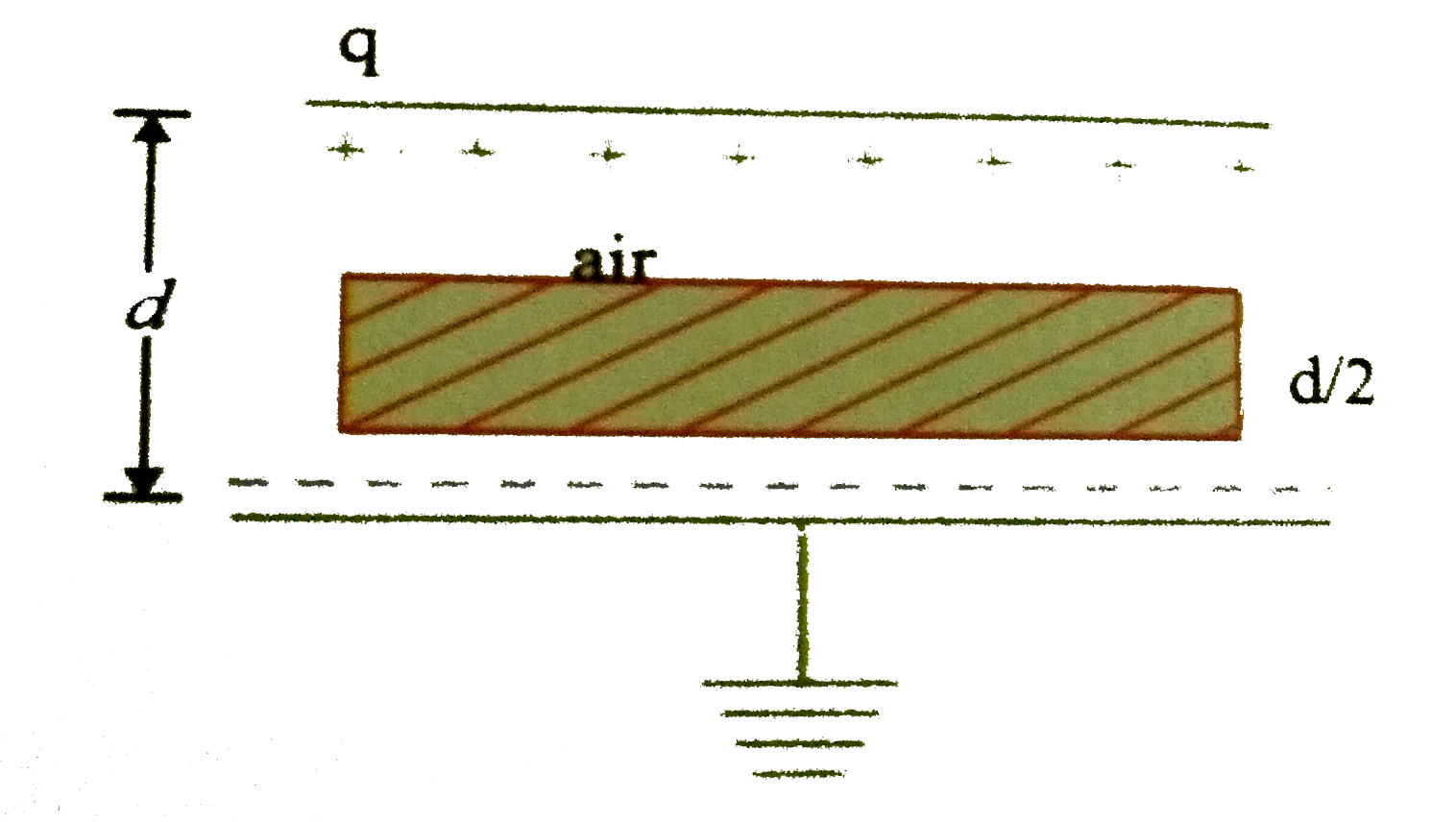 .
.
View SolutionTwo conductors carrying equal and opposite charges produce a non uniform electric field along X- axis given by `E=(Q)/(in_(0)A)(1+Bx^(2))` where `A` and `B` are constant. Separation between the conductors along X-axis is `X`. Find the capacitance of the capacitor formed.
View SolutionFind the capacitance of a system of two identical metal balls of radius a if the distance between their centres is equal to `b`, with `b gt gt a`. The system is located in a uniform dielectric with permittivity `K`.
View SolutionA capacitor has two square plates each of side `l` making an angle `theta` between them as shown in Fig. Calculate capacitor of the arrangement for small values of `theta`

View SolutionThe equivalent capacity between `A` and `B` in the given circuit is
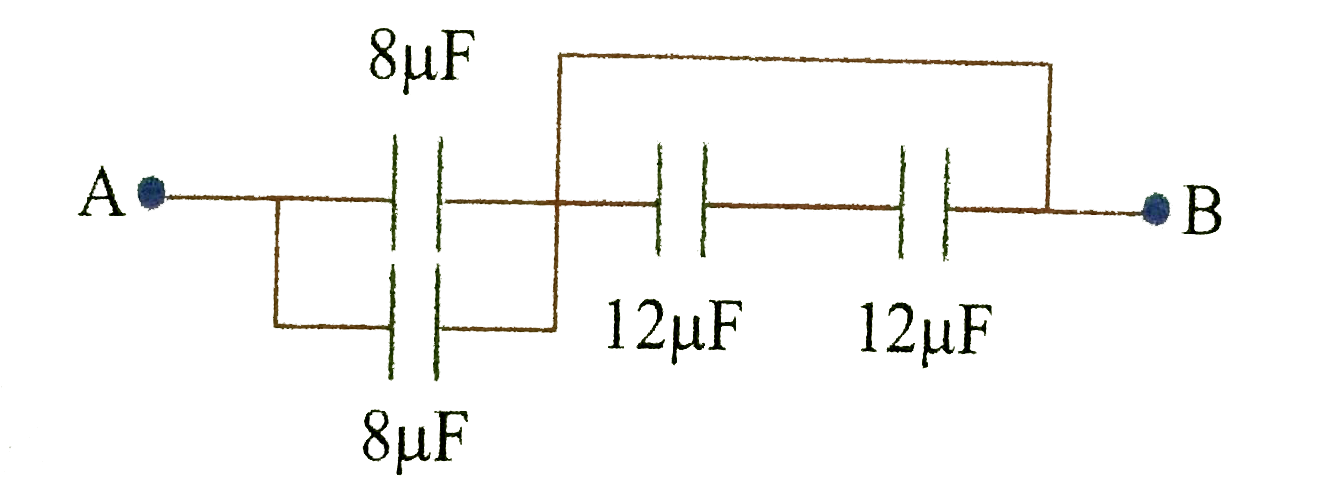 .
.
View SolutionWhen the space between the plates of a parallel plate condenser is completely filled with two slabs of dielectric constants `K_(1)` and `K_(2)` and each slab having area `A` and thickness equal to `(d)/(2)` as shown in the figure
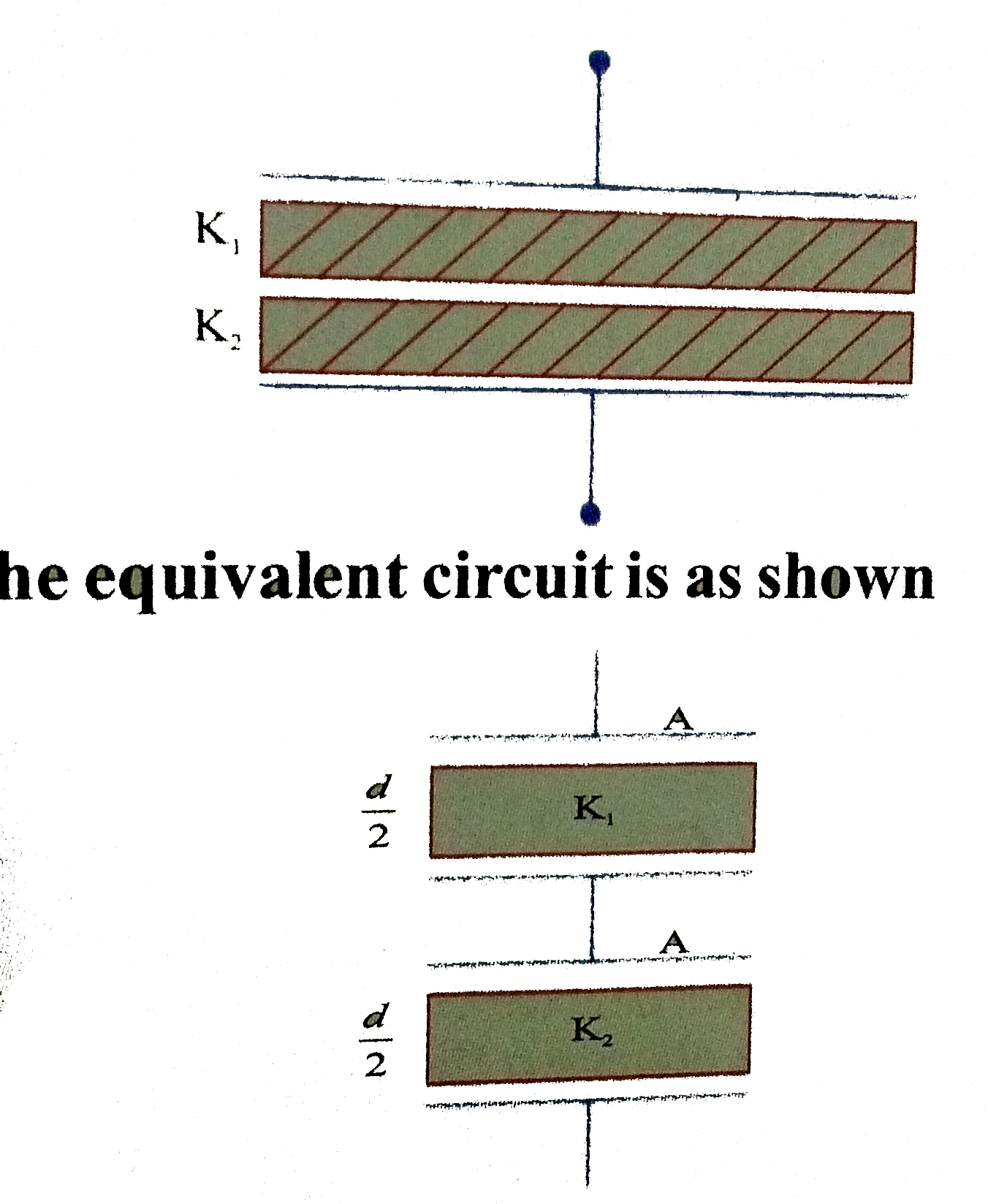
Fig. The equivalent circuit is as shown.
 .
.
View SolutionIn the net work three identical capacitors are connected as shown. Each of them can withstand to a maximum `100 V` potential difference. What is the maximum voltage that can be applied across `A` and `B` so that no capacitor gets spoiled.
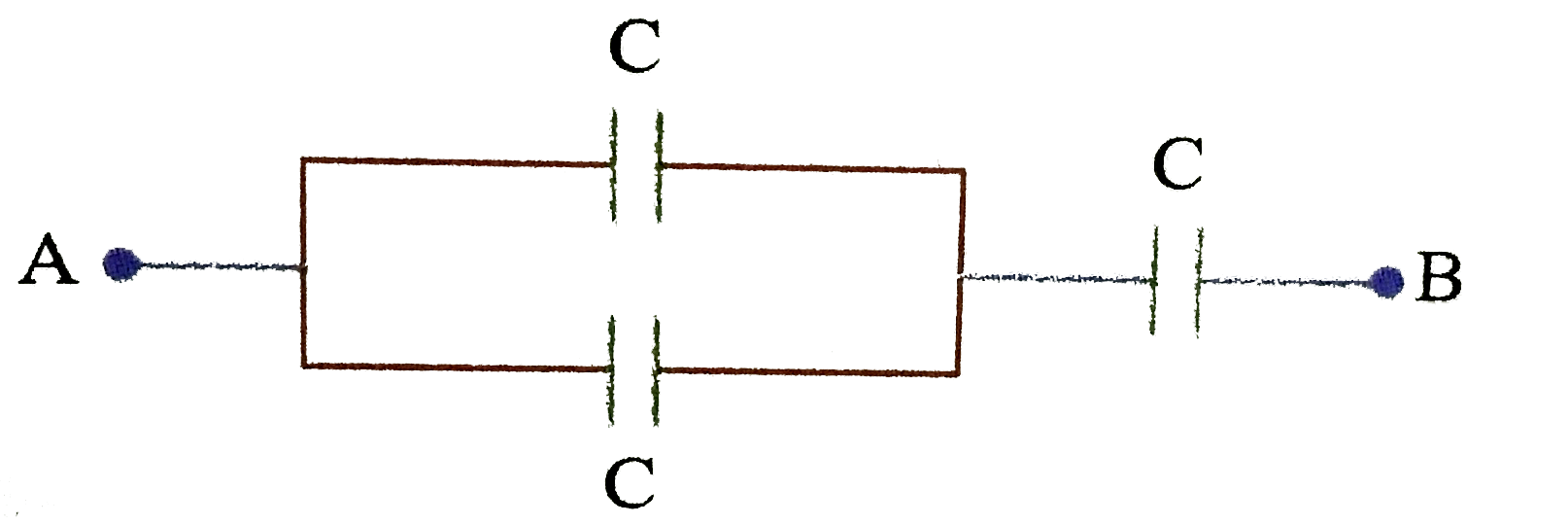 .
.
View SolutionCalculate the capacitance of a parallel plate capacitor, with plate area `A` and distance between the plates `d`, when filled with a dielectric whose permittivity varies as
`in(x)=in_(0)+kx(0 lt x lt (d)/(2)), in(x)=in_(0) +k(d-x)((d)/(2) lt x le d)`.
View SolutionWhen the space between the plates of a parallel plate condenser is completely filled with two slabs of dielectric constants `K_(1)` and `K_(2)` and each slab having area `(A)/(2)` and thickness equal to distance of seperation `d` as shown in the figure.
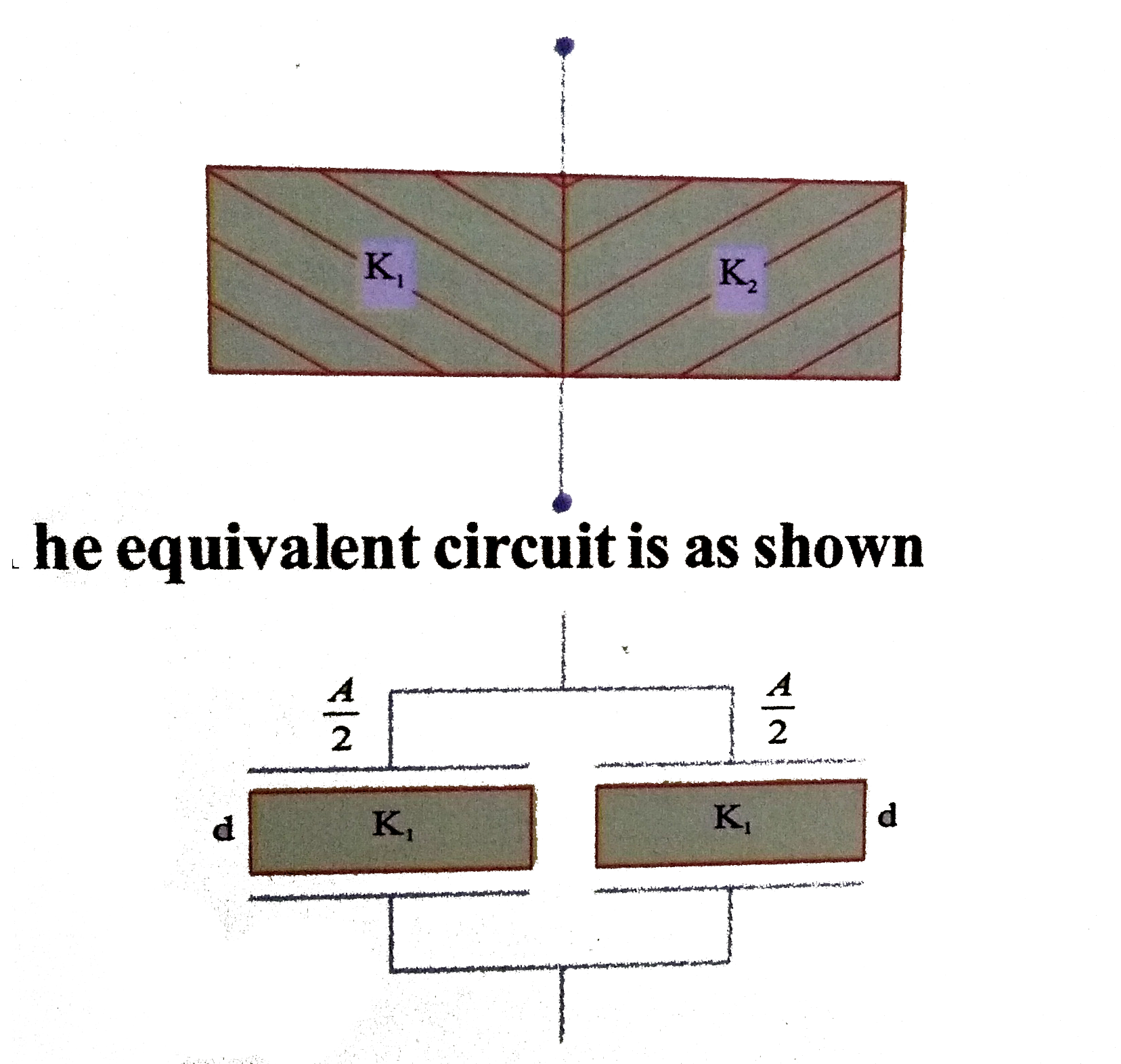
Fig. the equivalent circuit is as shown.
 .
.
View SolutionA parallel plate capacitor of area `A`, plate separation `d` and capacitance `C` is filled with three different dielectric materials having dielectric constant `K_(1),K_(2)` and `K_(3)` as shown in fig. If a single dielectric material is to be used to have the same effective capacitance as the above combination then its dielectric constant `K` is given by :
View SolutionSolve the above problem when a thin metal sheet is inserted, separating dielectric`1` and `2` from `3`.
View SolutionFour identical metal plates are arranged in air at equal distance d from each other. The area of each plate is `A`. A batery of emf V is connected across plates 1 distribution and find the capacitance of the system between points `1` and `2` if the other two plates are connected by a conducting wire as shown in.
 .
.
View SolutionFind equivalent capacity between `X` and `Y`
 .
.
View SolutionFind equivalent capacity `X` and `Y`
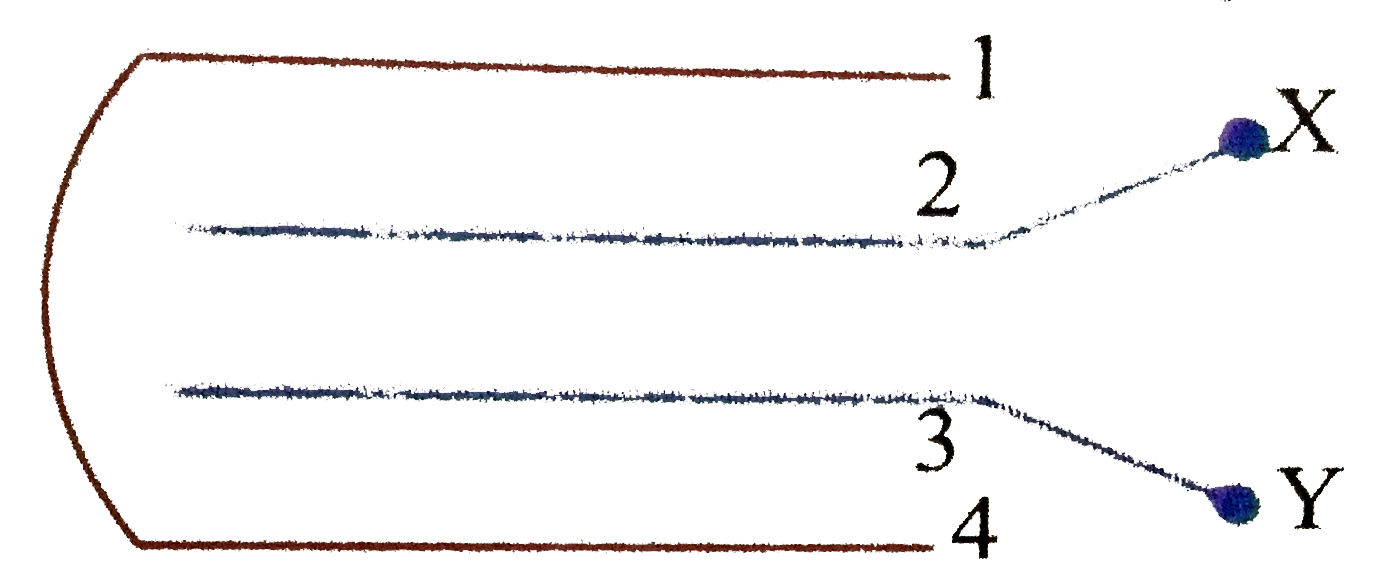 .
.
View SolutionA capacitor of capacitance `C_(o)` is charged to a potential `V` and then isolated. A small capacitor `C` is then charged from `C_(o)`, discharged and charged again, the process being repeated `n` times. Due to this, potential of the large capacitor is decreased to `V`. Find the capacitance of the small capacitor :
View SolutionIn the circuit shown in figure `C_(1)= 1mu F` and `C_(2) = 2 mu F`. The capacitor `C_(1)` is charged to `100 V` and the capacitor `C_(2)` is charged to `20 V`. After charging then are connected as shown. When the switches `S_(1),S_(2)` and `S_(3)` are closed, the charged flowing through `S_(1)` is
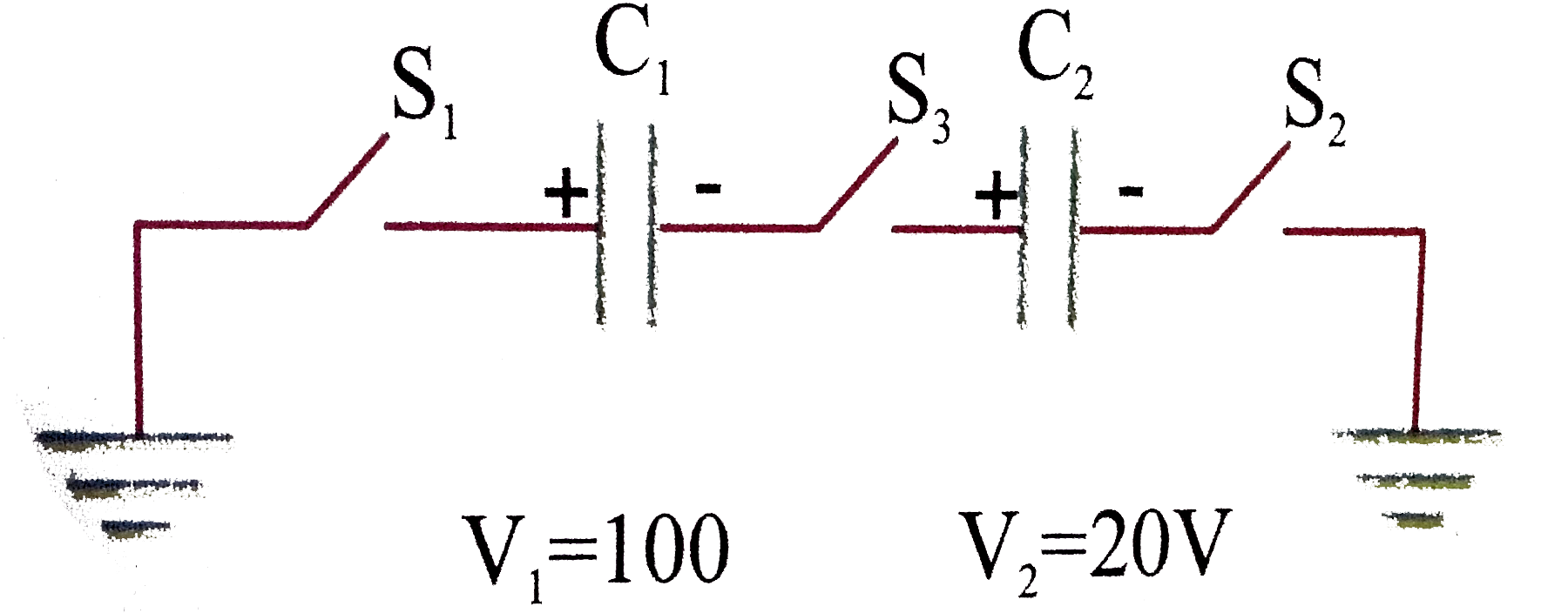 .
.
View Solution
Solved Example questions and complete solutions for chapter CAPACITANCE of NARAYANA PHYSICS (HINGLISH) of Class 12